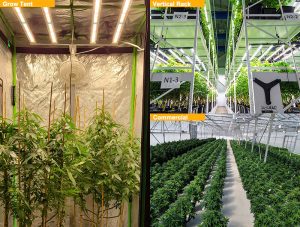Keywords: LED, fluorescent, HID, incandescent
LED plant lighting has become increasingly popular in recent years due to its energy efficiency and customizable spectrum options. In comparison to other types of plant lighting, such as fluorescent, HID, and incandescent, LED lighting offers several key advantages.
When comparing LED lighting to fluorescent lighting, LED lights are more energy efficient and have a longer lifespan. LED lights also produce less heat, making them ideal for indoor gardening where temperature control is important. Additionally, LED lights can be customized to emit specific wavelengths of light, allowing for optimal growth and flowering of plants.
In comparison to HID lighting, LED lights are also more energy efficient and have a longer lifespan. HID lights, such as high-pressure sodium and metal halide bulbs, can be more costly to operate and require frequent bulb replacements. LED lights, on the other hand, have a lower energy consumption and can last up to 50,000 hours before needing to be replaced.
Lastly, when comparing LED lighting to incandescent lighting, LED lights are again more energy efficient and produce less heat. Incandescent bulbs are not typically recommended for plant lighting as they emit a lot of heat and do not provide the full spectrum of light that plants need for photosynthesis.
In conclusion, LED plant lighting offers numerous advantages over other types of lighting, including energy efficiency, customizable spectrum options, and longer lifespan. While the initial cost of LED lights may be higher, the long-term benefits make them a worthwhile investment for indoor gardeners.

+86 18878548030
Email: nancy@hishine.cc nancy@hishinelight.cc

